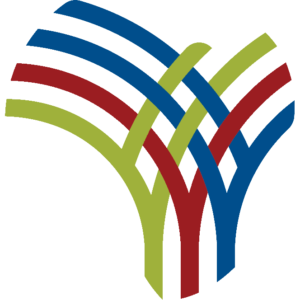[ad_1]
President Hichilema’s plan for kickstarting the economic recovery in Zambia included taming inflation, job creation for the youth, restoring the confidence of international investors and addressing external debt.
- Hakainde Hichilema has guided Zambia towards economic recovery and stability since taking office in August last year.
- COVID-19 pandemic, climate change, high debt portfolio and other headwinds decimated Zambia’s economy in 2021 to less than 3% of GDP.
- The proven stability approach sets an example for other African nations looking to bounce back from a raft of economic and inflationary pressures.
The dawn of hope for Zambia
Hakainde Hichilema is one of the most successful businesspersons in Zambia. During the presidential election in 2021, Hichilema contested on a United Party of National Development, in which he is the party leader.
The six-time presidential candidate was, in August 2021, declared the winner of the presidential poll. His victory ended incumbent President Edgar Lungu’s six-year rule. Hichilema won in a landslide. He garnered 2.8 million votes — past the threshold of the more than 50% needed to win the poll. Lungu, who came in second, garnered 1.8 million votes.
ALSO READ: Kenya: Ruto plans to strengthen medium-term public finances, but ratings drop in 2022 is imminent.
When Hakainde Hichilema got elected as President of Zambia, the country was in economic turmoil. Zambia has faced massive economic challenges as one of the world’s most indebted countries. In 2020, the nation became the first one to default on its sovereign debt, with the COVID-19 pandemic exacerbating the impact
Well aware of the assignment before him, Hichilema unveiled several economic policies to solve the deep-rooted economic challenges of the mineral-rich country. Zambia, Africa’s second-largest producer of copper, has struggled as the price of copper, the country’s main export, fell amid the crippling impact of its debts.
President Hichilema’s plan for kickstarting the economic recovery included taming inflation, job creation for the Zambian youth, restoring the confidence of international investors and addressing external debt. Hichilema remained committed to improving Zambia’s system of education. This way, every young Zambian has an opportunity for government assistance to embark on a productive career. This enables them can make a decent living to provide for their families and contribute to the growth of the Zambian economy.
Zambian citizens were hopeful that the longstanding business tycoon and opposition leader would usher them into a new period of economic recovery and prosperity. Neighbouring African nations closely watched Zambia’s transition hoping for better diplomatic and economic relations.
The road to economic recovery in Zambia
Many people have watched Zambia’s economic performance in the last year. Many have wondered how the country’s economy has managed to shine in areas where almost every nation in the world has struggled.
COVID-19 pandemic, climate change, high debt portfolio and other headwinds decimated Zambia’s economy in 2021 to less than 3% of GDP. This represented a low from 4.9% in 2020 and another 4.0% in 2018.
According to Zambia’s Policy Monitoring and Research Centre, the current leader has overseen a raft of fiscal and monetary measures toward economic recovery.
After taking over the government’s reign, President pledged to implement a robust reform program. The program would reestablish macroeconomic stability and promote a private sector-led economic recovery. The government prioritized social sector spending in line with these reforms.
The President also set Zambia towards improved transparency in debt management and reporting. This was a clear commitment to increasing budget credibility, which remains essential to restoring fiscal sustainability. Consequently, Zambia has made substantial strides in driving macroeconomic recovery from a challenging economic situation compounded by the COVID-19 pandemic.
ALSO READ: ICT sector to reap big in Ruto’s Kenyan digital space plan
Addressing inflation in Zambia
Various African countries, including Kenya, Ghana, Nigeria, Zimbabwe, and South Africa, have failed to tame rising inflation and plummeting currencies. However, Hichilema’s government has managed to reduce Zambia’s inflation from 24.4% in August 2021 to 9.7% in June 2022.
Part of President Hichilema’s vision was to quadruple Zambia’s growth through agriculture and upscaling production in all economic spheres. In keeping with the promise to support agriculture, President Hichilema’s government abolished 5% customs on chicken and cattle breeding imports. The government also offered technological and monetary incentives to farmers.
Further, Hichilema’s administration provided a market for various crops and other commodities to reduce post-harvest losses. Moreover, the government also sought to encourage commercial banks to offer low-cost credit to farmers to foster productivity.
These policies have led to a sustained fall in food prices. Notably, the prices fell from 12% in July to 11.3% in August. Consumer prices have also remained steady in the last year. However, challenges persist in Zambia’s mining sector, which accounts for up to 10% of the country’s GDP.
During a meeting in November last year, Zambia’s monetary policy committee boldly raised the monetary policy rate to 9%. This rate, equivalent to 50 basis points, has since remained unchanged.
The government under Hakainde Hichilema had the ultimate target of inflation reduction to between 6% and 8% by June 2023. The monetary committee has since revised this goal to the first quarter of 2024. Nevertheless, Zambia’s inflation rate has decreased as the growth in food costs eases.
Achieving currency stability through debt restructuring
Zambia has dealt with the legacy of years of economic mismanagement, with an especially inefficient public investment drive. Zambia has been in debt distress. Therefore, the country needed a deep and comprehensive debt treatment to place public debt on a sustainable path
Zambia’s bilateral creditors, including France, the UK and China, agreed on July 30 to provide the financing assurances that Africa’s first pandemic-era sovereign defaulter needed to secure a final economic bailout.
After months of negotiations, Zambia agreed with the International Monetary Fund (IMF) to restructure its debt. On August 31, 2022, the IMF approved a $1.3bn loan to Zambia. This was in addition to another $1.3 billion special drawing rights apportionment from the fund it received in August 2021.
The bailout package has helped contain the rising prices due to supply-chain disruptions emanating from the war in Ukraine and the ravages caused by the covid-19 pandemic. This has seen Zambia’s national currency, the Kwacha, strengthen against the US dollar. Consequently, the Zambian kwacha is the best-performing currency in the world, rallying over 18.5% from January to September this year.
When he initially took office about a year ago, Zambia’s current leader was mocked by critics. Many dubbed him “the calculator lad” because of his strong emphasis on the economy and career as an accountant.
Looking back, it is clear that Zambia needed these abilities to get out of the economic quagmire it was in at the time. Hakainde Hichilema has guided Zambia towards economic recovery and stability since taking office in August last year. The proven stability approach sets an example for other African nations looking to bounce back from a raft of economic and inflationary pressures.
ALSO READ: Deal to end Zambia’s debt problem “probable”
[ad_2]
Source link


